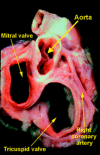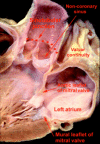Clinical anatomy of the aortic root
- PMID: 11083753
- PMCID: PMC1729505
- DOI: 10.1136/heart.84.6.670
Clinical anatomy of the aortic root
Figures







References
Publication types
MeSH terms
LinkOut - more resources
Full Text Sources
